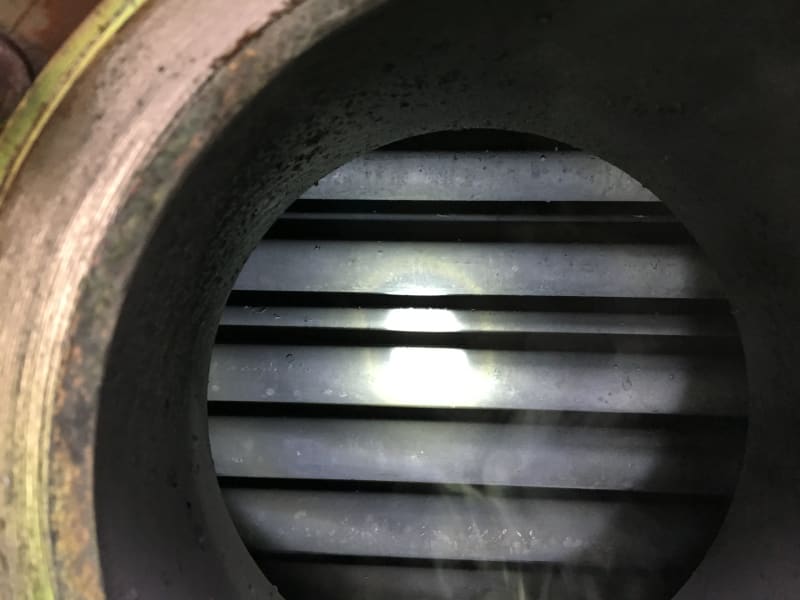G'day guys
We have a tube heat exchanger which cools process gas from the Claus sulfur recovery unit (inlet 340 deg C) to about 140 deg C (outlet). The process gas contains H2S, CO2. The waste heat is used to generate steam. The boiler feed water is 100 C, steam leaves at about 140 C.
We noticed the outlet gas temperature was 70 C for 1 month! Which didn't make sense, as the lowest temperature medium is 100 C. And alarm bells rang in my head for condensation in the exchanger!
Opened up the heat exchanger, sure enough bottom was full of water, leaks found in bottom tubes. As the boiler water (shell side) is at 3 bar and process gas is 0.1 bar (tube side), a leak would introduce water into the process gas. This no doubt caused sulfuric acid to form, and there was a sludge of FeS, pyrite, and similar on the bottom of the heat exchanger that was covered in water.
Tubes plugged and all is fine now, exit temp back up to 140 C. Turns out during start up they did not purge with N2, so H2SO4 was forming which probably caused the original leak. Then once water came in, it went from bad to worse.
Can anyone provide an idea how the gas is able to leave at 70 C, when all fluid flowing in are over 100 C? This has stumped us.
Many thanks,
Rob
Rob Muggleton
Corrosion, Oil & Gas
We have a tube heat exchanger which cools process gas from the Claus sulfur recovery unit (inlet 340 deg C) to about 140 deg C (outlet). The process gas contains H2S, CO2. The waste heat is used to generate steam. The boiler feed water is 100 C, steam leaves at about 140 C.
We noticed the outlet gas temperature was 70 C for 1 month! Which didn't make sense, as the lowest temperature medium is 100 C. And alarm bells rang in my head for condensation in the exchanger!
Opened up the heat exchanger, sure enough bottom was full of water, leaks found in bottom tubes. As the boiler water (shell side) is at 3 bar and process gas is 0.1 bar (tube side), a leak would introduce water into the process gas. This no doubt caused sulfuric acid to form, and there was a sludge of FeS, pyrite, and similar on the bottom of the heat exchanger that was covered in water.
Tubes plugged and all is fine now, exit temp back up to 140 C. Turns out during start up they did not purge with N2, so H2SO4 was forming which probably caused the original leak. Then once water came in, it went from bad to worse.
Can anyone provide an idea how the gas is able to leave at 70 C, when all fluid flowing in are over 100 C? This has stumped us.
Many thanks,
Rob
Rob Muggleton
Corrosion, Oil & Gas

